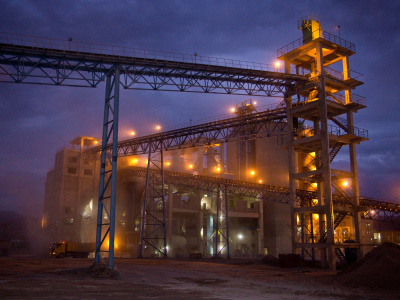
EU negotiates future development funding: Where will the money go?
For those concerned with development and Africa, the three big questions during the EU budget negotiations are: “how much money is going to be available?”, “what is it going to be for?” and “which countries are going to get it?”. One year has passed since the EU institutions started the cycle of negotiations for its next multiannual financial framework (MFF) covering the period 2014-2020. A key round of talks took place last week.
Negotiations between Member States’ ministers are mostly centred on the “big ticket items” of spending inside the EU – Cohesion Policy and the Common Agricultural Policy – and not the relatively smaller part of external action, which currently makes up 6.8% of the proposed budget. Nevertheless, progress in the discussions about expenditure for external action, falling under “Heading 4 – EU as a global player”, has been achieved.
At the EU’s General Affairs Council of 26 March 2012, discussions – covered in detail in a recent ECDPM Briefing Note – took place on the so-called negotiating box, a paper outlining key issues and options of the budget. It was finalised and handed over to the European Council for their 28-29 June meeting. Though nothing has yet been decided, the points raised in the new updated negotiating box indicate where Member States still disagree, and it serves as a point of departure for future discussions.
On Heading 4 “EU as a global player”, debates will focus on the following points:
- The amount for the heading
- Continued commitment of 0.7% of GNI to Official Development Assistance by 2015
- Ensuring that at least 90% of overall external assistance is counted as Official Development Assistance
European Development Fund (EDF): inside or outside the budget?
In the new negotiating box it is proposed that the EDF remains outside the budget until 2020. Budgetisation seems less likely than the maintenance of the status quo of the EDF being outside the budget, yet with a number of member states arguing for of EDF budgetisation in March, it is not surprising that this is listed as one of the key subjects without agreement reached. It is still unclear what a budgetisation of the EDF would mean in terms of the final amount available for African, Caribbean and Pacific Group of States, which receive aid from this source. 1) Would the EC’s proposed amount for the EDF be added to the budget? 2) Would the EDF be integrated, but with the amount for the EDF reduced? or 3) Would the EDF simply be integrated into the budget without adding any additional funds, meaning that other instruments would receive less at the expense of the EDF?
External relations instruments: partial agreement
During the 25 June Foreign Affairs Council meeting, a partial general approach on a package of 8 financial instruments for external action was adopted. A “Partial general approach” means that the Council tries to reach an agreement on the objectives, structure and content of individual parts of the MFF, but not yet on the amounts.
For the Development Cooperation Instrument (DCI), one of the 8 instruments, there are two issues worth highlighting:
With the discussion still ongoing on differentiation of aid flows, the annex listing countries with which the EU will continue specific bilateral cooperation is not included, signalling that Member States have not yet agreed on this.
In the paragraph setting out the general principles of which countries to support, “[c]riteria such as the Human Development Index, the Economic Vulnerability Index and other relevant indexes may be used to underpin the analysis and identification of countries most in need” was added. Since the criteria for exceptional cases refers back to this statement, there is a possibility of adding more countries to the bilateral cooperation list than was suggested in December 2011, when 21 countries were excluded compared to the 2007-2013 DCI.
Hard-fought negotiations expected
The aim is to conclude the negotiations by the end of 2012, since this, following adoption of the relevant legislation, would allow the new MFF to enter into force in 2014. The timeline is the following:
As the budget cannot be adopted without the European Parliament’s consent – a new provision introduced by the EU’s Lisbon Treaty, before it only had the last word on “non-compulsory” expenditure, not the entire budget – the finalisation of the legislative phase might take time since the Parliament is likely to fight hard to influence the MFF negotiations. As MEP Böge puts it: “On behalf of the negotiating team I can affirm our readiness to enter into negotiations with the Council. We have a clear mandate which we will firmly and stubbornly defend”. However, even being able to conclude the Council negotiations by 2012 seems to be ambitious. After 4 months of talks, the amounts have still not been introduced into the discussions.
With the current economic crisis and changing political landscape in Europe, these will be hard-fought negotiations. It’s a discussion both on priorities and amounts, where Member States positions differ from each other. For development, the two questions are:
- Will Member States be willing to invest in developing countries when austerity measures are being implemented at home?
- Will Member States believe that spending on EU development cooperation offers an added value compared to bilateral development cooperation?
Developing partner countries of the EU will need to continue pressing on the importance of sustained funding, and stress the positive impact it is achieving and show why aid volumes should not be reduced.
———————————-
Ulrika Kilnes is Research Assistant at ECDPM's EU External Action Programme.
This blog post features the author’s personal views and does not represent the view of ECDPM.


